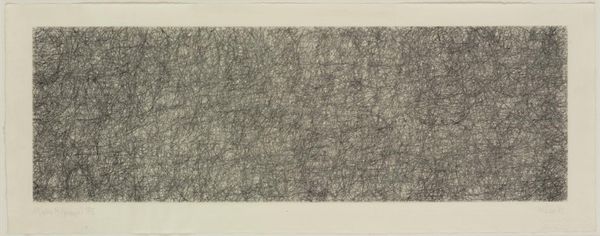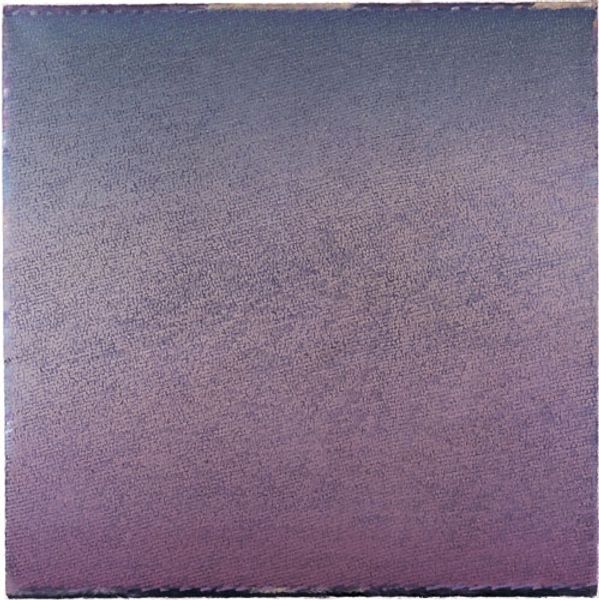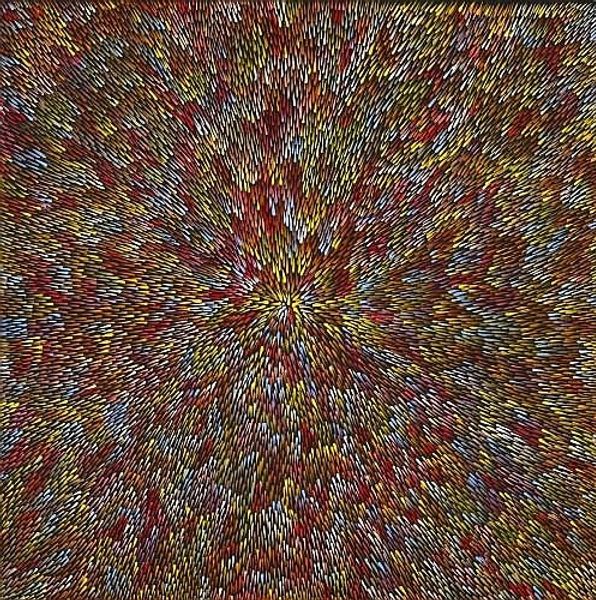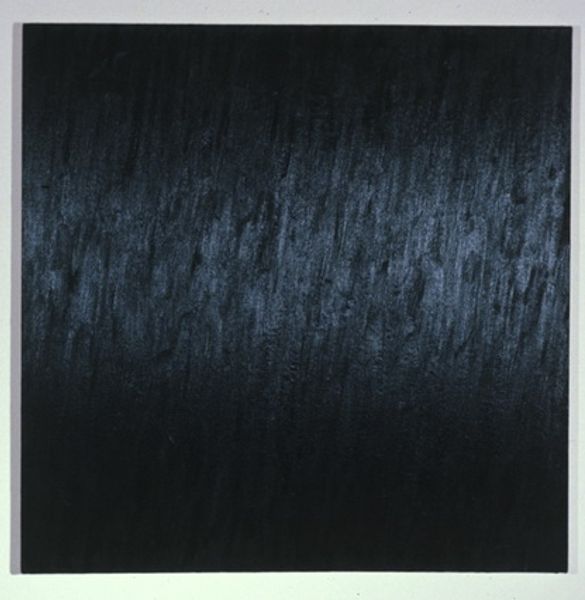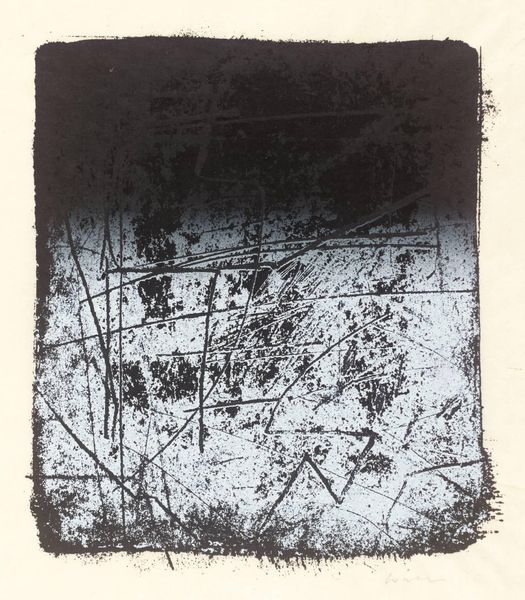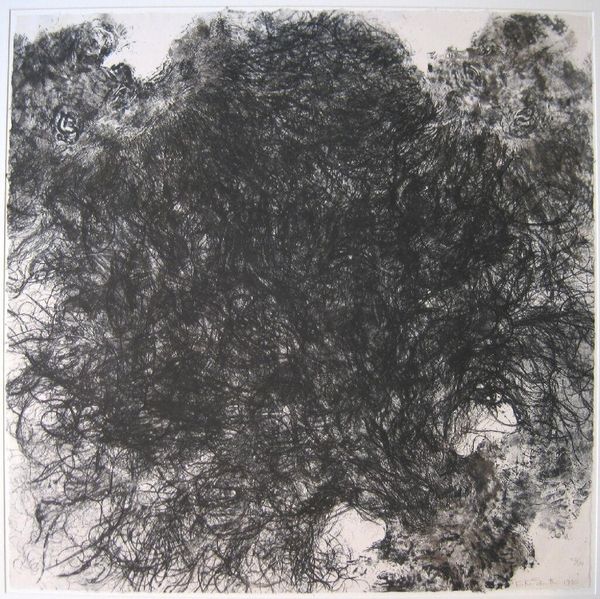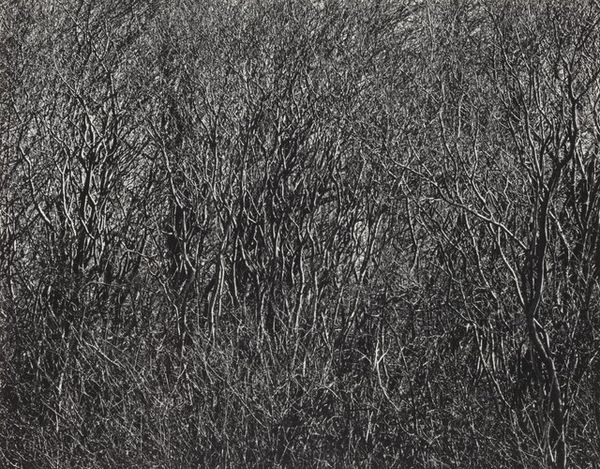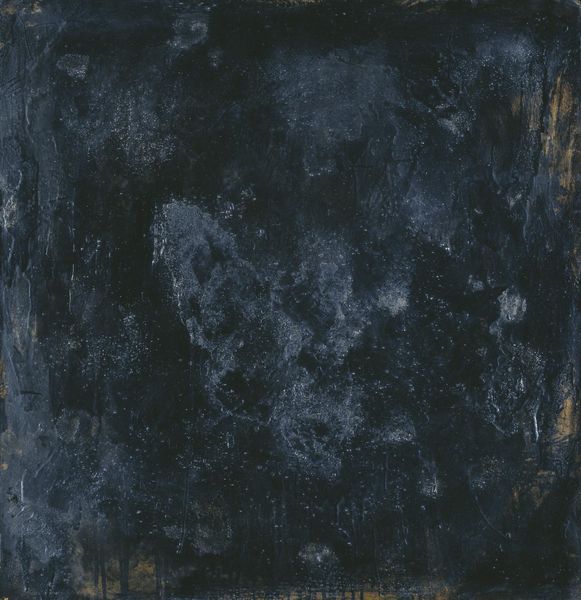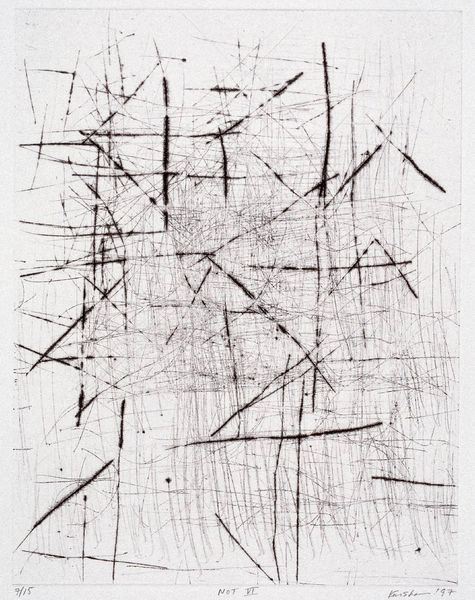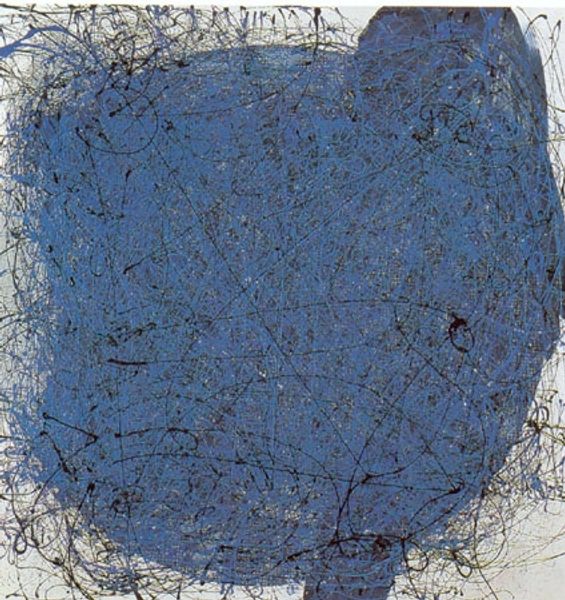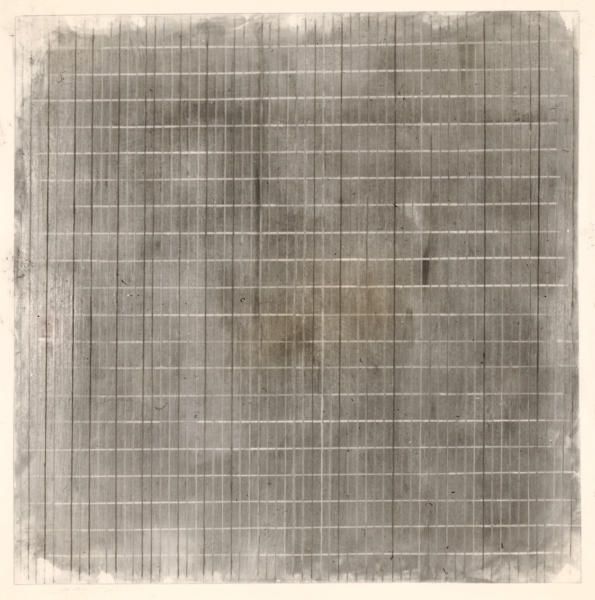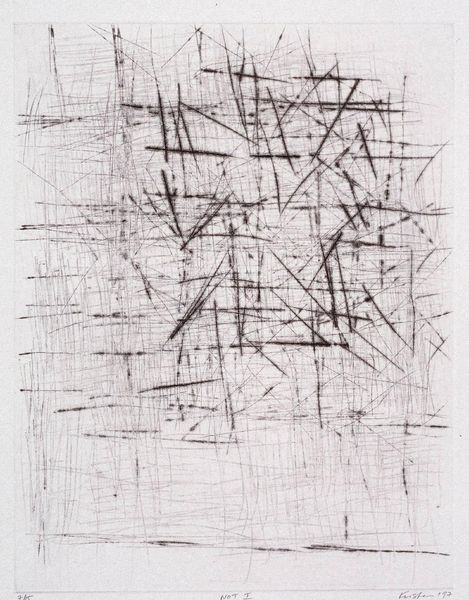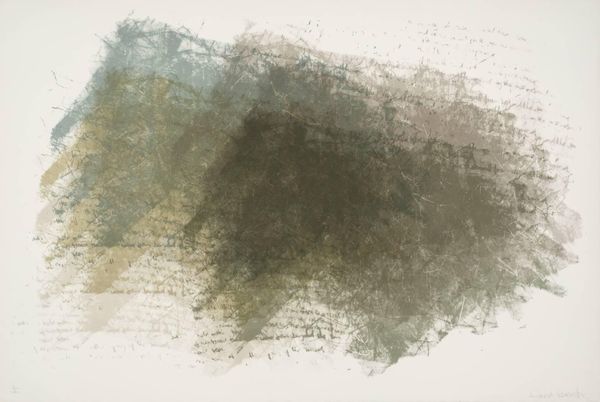
drawing, graphite
#
abstract-expressionism
#
drawing
#
abstract expressionism
#
organic
#
organic pattern
#
abstract-art
#
line
#
graphite
#
abstract art
#
gutai
Copyright: Akira Kanayama,Fair Use
Curator: Standing before us is a piece entitled "Work" by Akira Kanayama, completed in 1957. It’s a graphite drawing, abstract in nature. What strikes you first about it? Editor: The density. It’s almost overwhelmingly dense. Like a tangled thicket or a storm cloud condensed into a square. The visual weight is significant. Curator: Indeed. Given that Kanayama was part of the Gutai Art Association, which challenged traditional artistic conventions, this drawing resonates with their ethos. The marks aren't representational; they don't depict anything concrete. Instead, they point to process itself. Editor: Process becomes subject. And it forces us to confront our expectations. Does this "work" critique the labour implicit in art making or, perhaps, the post-war economic boom driving society to make... what, exactly? Curator: Possibly both. Line, as a symbol, can represent a multitude of things: connections, boundaries, paths, journeys. The layered lines hint at complexity, decisions made and unmade. Does the sheer repetition evoke monotony to you? Editor: I think it's about visibility and legibility within repetitive actions that form daily experiences. When one line mimics others does it become lost in the process? I notice, however, the subtle variations in the darkness of some lines, suggesting pressure, energy. Curator: These variations become incredibly important. As a symbol it may reference the subtle negotiations involved with collective experience as Gutai hoped to challenge established artistic and political power structures after World War II. Editor: It seems to demand a re-evaluation of mark-making itself; perhaps also asking what work *is* and for whom *is* it done. Thank you for sharing insights on the symbolism of these drawings. I come away pondering ideas about societal collaboration under conditions of repression or conflict. Curator: The effect these visual abstractions have on our sense of sight, body, and experience encourages us to slow down our interpretation as it also helps open up possibilities beyond our conventional visual culture.
Comments
No comments
Be the first to comment and join the conversation on the ultimate creative platform.
